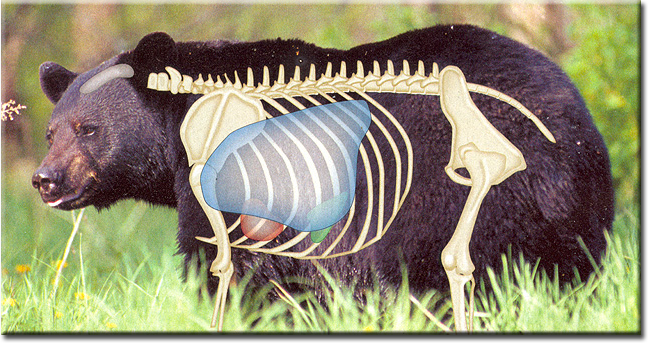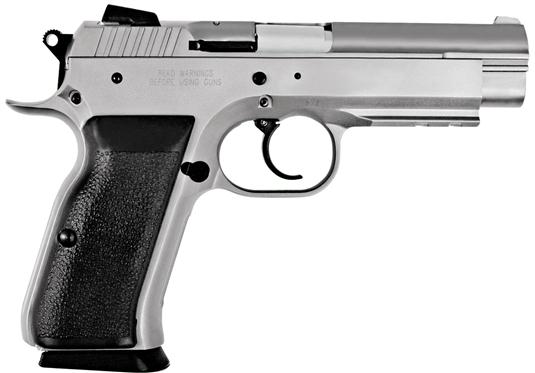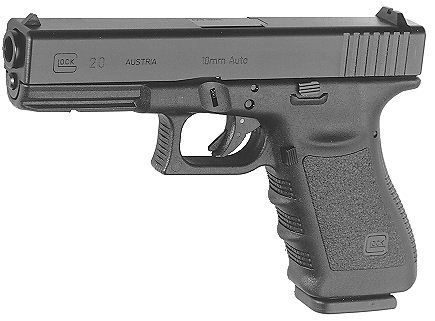I went too the range last night with one of my neighbors that had purchased a new glock 45 acp,
for his personal protection carry pistol.he had spent a month or so doing some research and decided that he did not want a 9mm , 40 cal, or a 357 sig caliber handgun.
I had suggested a glock 10 mm , or a 45 acp,
( he had, in my opinion, rather foolishly, refused to test shoot, my 10 mm pistol, as I'd offered several times to let him, before making his choice)
and he had decided, too select the 45 acp based on several discussions with the local gun-shop counter guy.
now a 45 acp cartridge is certainly one of the better choices,
so its not like he screwed up,selecting the 45 acp vs the 10-mm,
but I suppose being a hand loader I see the 10-mm as having a minor edge in power ,
and a couple extra cartridges in the magazine capacity ,
so thats the route I selected.
and yes the ammo is more common and generally a bit less expensive, for the 45 acp..
I can safely say that the better 45 acp ammo does kill deer and hogs much more effectively in my experience than any 9mm ammo yet tried.
I can absolutely assure anyone reading this thread that where you hit a deer or hog has a profound effect on how effectively you will be at dropping that animal at the point of bullet impact, and that the larger and more powerful caliber handguns with similar hits have a noticeably more rapid incapacitation.
(thus from a pragmatic stand point I feel much better armed with a 10mm or 45 acp, than I would with a 38 spcl or 9 mm)
deer and hogs, I've seen hit with a 9 mm (here in florida thats legal) have rarely fallen close to where hit, and while a 45 acp and 10 mm are not my first choice, for hunting with a hand-gun, the results have been noticeably and consistently better.(look through the videos posted below and see why)
pure physics strongly suggests that the larger in diameter, the heavier and the faster a projectile is, the more energy it retains and in theory the deeper it penetrates, and the more tissue it can destroy on impact, if its correctly constructed,
but this also results in more recoil, at some point a compromise between available power and ease of control and accuracy must be chosen
I'd remind you most defensive use for a handgun will be at well under 30 yards.
,from a practical and experienced based compromise the 9mm is near the higher edge in ease of handling , reasonable accuracy and easy control and the 10mm and 45 acp loaded with the better ammo, is nearer the upper edge of effectiveness, that can be maintained while still having rapid and accurate shot placement, but higher recoil and noise levels mandates more practice, before proficiency is attained.
if you can,t accurately place shots where they are intended, caliber or power is meaningless,
and if a well placed hit,to center mass or two, on any opponent attacking you won,t reasonably incapacitate an opponent very rapidly,your using the wrong tool.
before anyone selects a pistol or chooses a pistol caliber to use, in that handgun, one would normally expect the purchaser, too think a bit about what the intended use for the pistol would be and if that choice would best match that intended use.
we all have slightly different expectations and a bit of research before making the purchase would certainly not hurt.
the main factor is WHAT DO YOU INTEND TO DO WITH THAT HANDGUN,AND WHAT LIMITATIONS ARE YOU WILLING TO PUT UP WITH,
a couple decades of field experience show that the 40 S&W and 10mm are both effective for self defensive use against human predators,
if the shots are placed into the vitals, the 40 S&W gives up a bit of power to gain a smaller size and less recoil,
but its hotter loads certainly provide you with reasonable lethality against closer range, human threats
something like a EAA 40 S&W or 10mm makes either a very effective defensive tool that could be used for hog hunts ,
the higher capacity and quick reload potential of the semi-auto handgun, might be useful in a gunfight but its unlikely to be a factor hunting,

S&W 1006 10mm

now if your going hunting the 10mm has potentially a few hundred extra fps so you gain power, at the cost of less easily concealed size but a bit more punch,but its not the ideal hunting tool, yes it does work , but in my experience, its not ideal.
but its still well under what something like a true hunting tool that you don,t have much use for concealment with like 44 mag, 454 cassul, or 480 ruger could provide for you in a larger and longer range hunting weapon, like a 6"-7.5"-10" ruger , dan wesson,or smith & wesson,revolver
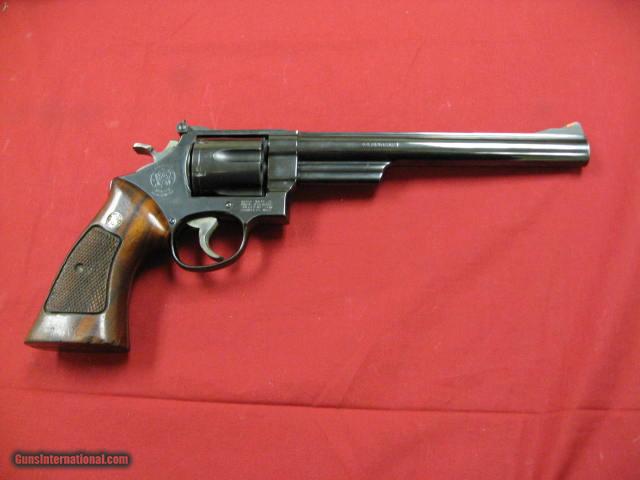
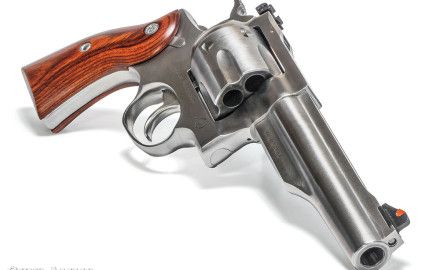
well the point here is that he went too sight in the pistol , at the local range and after we had that minor project, under control, he eventually and a bit reluctantly ,decided to try my 10mm... the result was about as I had mentioned several times previously.... after tying both pistols ,he admitted that he could feel a minor increase in recoil and the 10mm was marginal louder , but he was just as able too, shoot both hand guns about equally well, (and in fact the target he shot at 7 yards was noticeably better, with my 10mm) than he shot with his new 45 acp... more than likely because he was starting to relax at the range and become more familiar with the glock hand guns. the counter guy at the gun-shop had some how convinced him that the 10mm was much too powerful and that a 45 acp was just the perfect choice.
once he had actually tried both pistols he stated he doubted if I had not told him which caliber it was, shooting, that he would have noticed any appreciable difference.
the discussion went on a bit and I pointed out that ,
its your ammo and shot placement that makes the hand gun effective, it does not really mater a great deal if you use a 45 acp or a 10 mm if you can,t accurately place your shots and its the projectile that does all the damage, thus selecting 100% reliable and accurate ammo that functions 100% flawlessly in your particular pistol and being able to hit where you intend too is critical and the only way to test reliability and gain the required shills is through constant practice (heres where that 45 acp has a advantage, in lower ammo cost if you don,t reload.) the vast majority of people that carry a handgun, will thankfully never need to defend their lives , but the percentage that do carry , that have, ever drawn their pistol, ,or have stopped a crime in progress is a bit higher than the media would like to admit.....
http://garage.grumpysperformance.co...n-a-defensive-handgun-would-be-and-why.11908/
http://garage.grumpysperformance.co...arry-that-concealed-handgun.14502/#post-75837
related linked videos
all the comparative data between different calibers and pistol vs rifle etc might seem to indicate that caliber and power does not mater as much as most people think it does, but they IGNORE the fact that accurate shot placement, a knowledge of anatomy is critical, simply shooting at the adversary's torso and hitting it someplace does not indicate a well placed shot,as any hunter knows or learns, put a shot through the heart,, both lung's or , liver shots that destroy a lot of tissue as the pass through and exit, are generally fatal,
I find this comparison below between the two well documented,
and well known to be effective calibers, 10mm and 357 mag,
rather interesting
notice the lighter bullet weights penetrate less
(as you may expect) but both would be effective
for his personal protection carry pistol.he had spent a month or so doing some research and decided that he did not want a 9mm , 40 cal, or a 357 sig caliber handgun.
I had suggested a glock 10 mm , or a 45 acp,
( he had, in my opinion, rather foolishly, refused to test shoot, my 10 mm pistol, as I'd offered several times to let him, before making his choice)
and he had decided, too select the 45 acp based on several discussions with the local gun-shop counter guy.
now a 45 acp cartridge is certainly one of the better choices,
so its not like he screwed up,selecting the 45 acp vs the 10-mm,
but I suppose being a hand loader I see the 10-mm as having a minor edge in power ,
and a couple extra cartridges in the magazine capacity ,
so thats the route I selected.
and yes the ammo is more common and generally a bit less expensive, for the 45 acp..
I can safely say that the better 45 acp ammo does kill deer and hogs much more effectively in my experience than any 9mm ammo yet tried.
I can absolutely assure anyone reading this thread that where you hit a deer or hog has a profound effect on how effectively you will be at dropping that animal at the point of bullet impact, and that the larger and more powerful caliber handguns with similar hits have a noticeably more rapid incapacitation.
(thus from a pragmatic stand point I feel much better armed with a 10mm or 45 acp, than I would with a 38 spcl or 9 mm)
deer and hogs, I've seen hit with a 9 mm (here in florida thats legal) have rarely fallen close to where hit, and while a 45 acp and 10 mm are not my first choice, for hunting with a hand-gun, the results have been noticeably and consistently better.(look through the videos posted below and see why)
pure physics strongly suggests that the larger in diameter, the heavier and the faster a projectile is, the more energy it retains and in theory the deeper it penetrates, and the more tissue it can destroy on impact, if its correctly constructed,
but this also results in more recoil, at some point a compromise between available power and ease of control and accuracy must be chosen
I'd remind you most defensive use for a handgun will be at well under 30 yards.
,from a practical and experienced based compromise the 9mm is near the higher edge in ease of handling , reasonable accuracy and easy control and the 10mm and 45 acp loaded with the better ammo, is nearer the upper edge of effectiveness, that can be maintained while still having rapid and accurate shot placement, but higher recoil and noise levels mandates more practice, before proficiency is attained.
if you can,t accurately place shots where they are intended, caliber or power is meaningless,
and if a well placed hit,to center mass or two, on any opponent attacking you won,t reasonably incapacitate an opponent very rapidly,your using the wrong tool.
before anyone selects a pistol or chooses a pistol caliber to use, in that handgun, one would normally expect the purchaser, too think a bit about what the intended use for the pistol would be and if that choice would best match that intended use.
we all have slightly different expectations and a bit of research before making the purchase would certainly not hurt.
the main factor is WHAT DO YOU INTEND TO DO WITH THAT HANDGUN,AND WHAT LIMITATIONS ARE YOU WILLING TO PUT UP WITH,
a couple decades of field experience show that the 40 S&W and 10mm are both effective for self defensive use against human predators,
if the shots are placed into the vitals, the 40 S&W gives up a bit of power to gain a smaller size and less recoil,
but its hotter loads certainly provide you with reasonable lethality against closer range, human threats
something like a EAA 40 S&W or 10mm makes either a very effective defensive tool that could be used for hog hunts ,
the higher capacity and quick reload potential of the semi-auto handgun, might be useful in a gunfight but its unlikely to be a factor hunting,

S&W 1006 10mm

now if your going hunting the 10mm has potentially a few hundred extra fps so you gain power, at the cost of less easily concealed size but a bit more punch,but its not the ideal hunting tool, yes it does work , but in my experience, its not ideal.
but its still well under what something like a true hunting tool that you don,t have much use for concealment with like 44 mag, 454 cassul, or 480 ruger could provide for you in a larger and longer range hunting weapon, like a 6"-7.5"-10" ruger , dan wesson,or smith & wesson,revolver


well the point here is that he went too sight in the pistol , at the local range and after we had that minor project, under control, he eventually and a bit reluctantly ,decided to try my 10mm... the result was about as I had mentioned several times previously.... after tying both pistols ,he admitted that he could feel a minor increase in recoil and the 10mm was marginal louder , but he was just as able too, shoot both hand guns about equally well, (and in fact the target he shot at 7 yards was noticeably better, with my 10mm) than he shot with his new 45 acp... more than likely because he was starting to relax at the range and become more familiar with the glock hand guns. the counter guy at the gun-shop had some how convinced him that the 10mm was much too powerful and that a 45 acp was just the perfect choice.
once he had actually tried both pistols he stated he doubted if I had not told him which caliber it was, shooting, that he would have noticed any appreciable difference.
the discussion went on a bit and I pointed out that ,
its your ammo and shot placement that makes the hand gun effective, it does not really mater a great deal if you use a 45 acp or a 10 mm if you can,t accurately place your shots and its the projectile that does all the damage, thus selecting 100% reliable and accurate ammo that functions 100% flawlessly in your particular pistol and being able to hit where you intend too is critical and the only way to test reliability and gain the required shills is through constant practice (heres where that 45 acp has a advantage, in lower ammo cost if you don,t reload.) the vast majority of people that carry a handgun, will thankfully never need to defend their lives , but the percentage that do carry , that have, ever drawn their pistol, ,or have stopped a crime in progress is a bit higher than the media would like to admit.....
http://garage.grumpysperformance.co...n-a-defensive-handgun-would-be-and-why.11908/
http://garage.grumpysperformance.co...arry-that-concealed-handgun.14502/#post-75837
related linked videos
all the comparative data between different calibers and pistol vs rifle etc might seem to indicate that caliber and power does not mater as much as most people think it does, but they IGNORE the fact that accurate shot placement, a knowledge of anatomy is critical, simply shooting at the adversary's torso and hitting it someplace does not indicate a well placed shot,as any hunter knows or learns, put a shot through the heart,, both lung's or , liver shots that destroy a lot of tissue as the pass through and exit, are generally fatal,
I find this comparison below between the two well documented,
and well known to be effective calibers, 10mm and 357 mag,
rather interesting
notice the lighter bullet weights penetrate less
(as you may expect) but both would be effective
Last edited:


